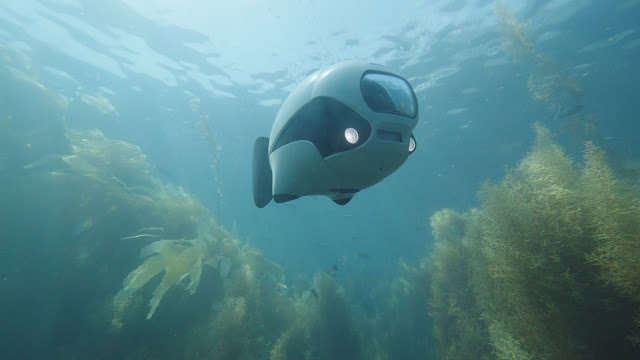Biki Underwater Drone
If you’re on the lookout for a new kind of drone experience, then how about diving into the deep blue with Biki.
The aquatic explorer, described as a “robofish” by its creator, comes with a 4K camera and can dive down as far as 196 feet (60 meters) into the ocean. Unlike some of its competitors, Biki can swim autonomously and without a tether, giving you greater freedom while eliminating concerns about potentially disastrous entanglements with underwater obstacles.
The robotic submersible, recently launched on Kickstarter by Beijing-based Robosea, can move at a leisurely 1.1 mph for up to 90 minutes on a single charge, while an flapping fish tail works to propel it through the water. You can control Biki via the accompanying app or with a physical controller, and if at any point the connection goes down between you and the robot, built-in GPS means it’ll automatically return to base.
You can even program your own routes and swim alongside, or simply let Biki wander off by itself while you stay on dry land and enjoy the footage it streams back to your smartphone or tablet. Built-in obstacle avoidance tech should save the robofish from any calamitous mishaps, though it clearly won’t be quick enough to escape the jaws of an angry shark or some other large creature that crosses its path.
Now, you may be wondering how the footage looks considering how Biki wobbles about as it swims along. Robosea promises the wide 150-degree lens and built-in stabilization system ensures smooth footage, and the clips on its Kickstarter page certainly appear to confirm this.
The team behind Biki is aiming to ship the device this August, with early bird backers able to snag one for $549, offering a substantial saving on the $1,024 retail price.
As with all Kickstarter projects, it’s important to check out the “risks and challenges” at the bottom of the product page to help you determine its viability. Robosea says it’s currently working on improving the durability of Biki’s shell and waterproof capabilities, kind of important for a device like this.
However, it says it’s already tested 30 prototypes and used feedback from more than 100 testers to improve the design. It’s also sailed through its $20,000 funding target, so it appears to be well on its way to becoming a reality.







Post a Comment